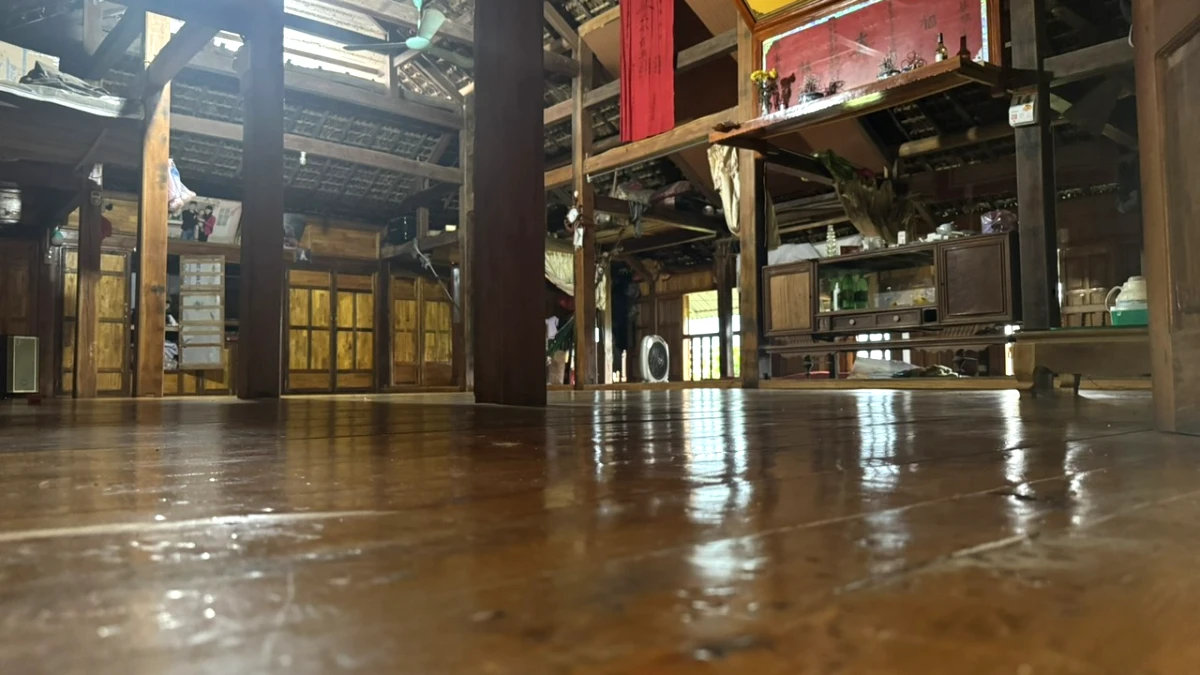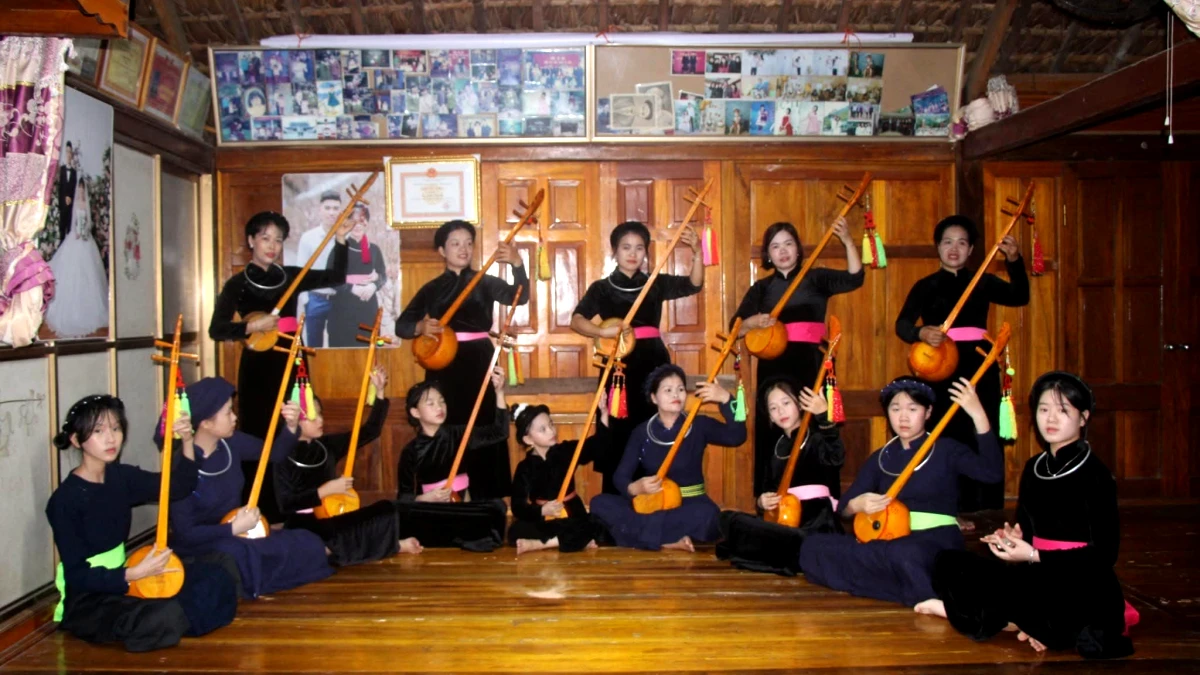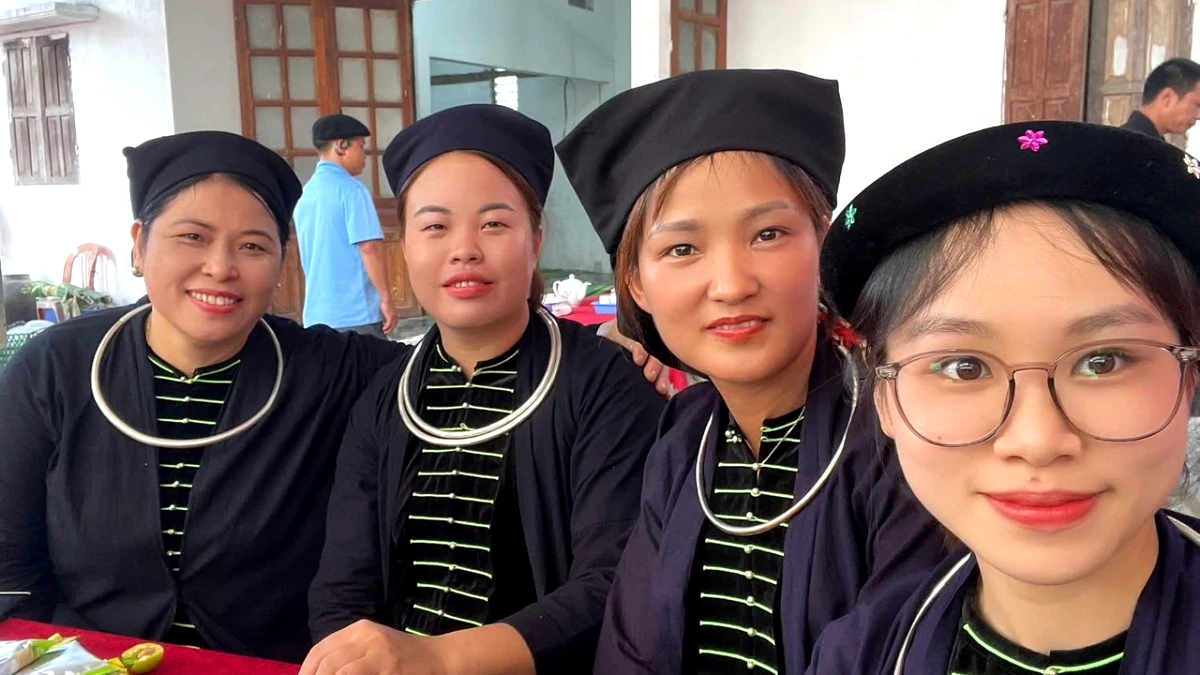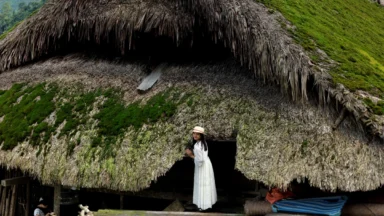Tay Ethnic Group in Ha Giang-Unique and Fascinating 2025
Tay Ethnic Group in Ha Giang. When you travel through Ha Giang’s breathtaking mountains, you’re not just admiring the scenery – you’re entering a living cultural mosaic. Among the many ethnic groups who call this region home, the Tay people offer a warm, welcoming insight into life in northern Vietnam.
The Stilt House of the Tay People in Ha Giang
The Tay are Vietnam’s second-largest ethnic group and have lived for generations in valleys surrounded by mountains and rivers. In Ha Giang, you’ll often find them living in stilt houses, growing rice and tea, and keeping traditions alive through music and crafts.
The traditional stilt house of the Tay people is a beautiful symbol of harmony with nature. Built mainly from wood, bamboo, and palm leaves, these houses stand elevated on sturdy wooden pillars, about 1.5 to 2 meters above the ground.
The space underneath is usually left open to store tools, firewood, or to shelter livestock. The living area above consists of several connected rooms:
- A main hall where guests are welcomed and family ceremonies are held.
- A kitchen with an open wood stove, where the family gathers around the fire.
- Bedrooms separated by wooden partitions.
The roof is typically covered with palm leaves, making the house cool in summer and warm in winter. The house faces mountains or rivers, reflecting the Tay belief in living close to nature and respecting the landscape.

Where to Find Them
The Tay people are the second-largest ethnic group in Vietnam and the largest minority community in Ha Giang. They are mainly concentrated in fertile valleys near the provincial center, especially in Quan Ba, Bac Quang, and Vi Xuyen, where rivers and streams provide ideal conditions for wet-rice cultivation.
With a long-standing tradition of rice farming, the Tay people possess remarkable agricultural skills and a deep love for nature. Golden terraced fields during harvest season, crystal-clear streams winding through villages – all paint a serene and picturesque landscape unique to this highland region.
Life and Đàn Tính Culture
Tay life is simple, yet deeply connected to nature. They work on terraced fields, raise livestock, and still wear hand-dyed indigo clothes. The Tay language, ancient folk songs, and bamboo instruments like the “tính tẩu” are still passed down from generation to generation.
The đàn tính, also known as tính tẩu, is a distinctive traditional musical instrument of the Tay people in Ha Giang. Typically featuring two or three strings, it has a lightweight wooden neck and a round resonator made from dried gourd, producing a warm, resonant, and deeply emotive sound.
The instrument is inseparably linked with Then singing – an art form that serves both as entertainment and as a vessel of profound spiritual meaning. During festivals, weddings, and traditional rituals, the gentle strumming of the đàn tính blends harmoniously with Then melodies, narrating tales of history, love, and the hopes of the mountain people.
For the Tay, the đàn tính is more than just a musical instrument – it is a cultural emblem, a bridge between the past and the present. Travelers to Ha Giang who have the chance to sit by a warm fire and listen to the đàn tính echoing through the mountains will discover the rustic yet vibrant soul of the local culture.
One of the Tay’s most important festivals is Long Tong (Going Down the Field), held early in the year to pray for a good harvest. Dressed in traditional attire, villagers sing, dance, and offer gifts to the gods of nature and ancestors – a vivid reflection of their spiritual life.

Tay Traditional Costume and their food in Ha Giang
The traditional costume of the Tay people in Ha Giang is simple yet refined, reflecting their close connection to nature and their rich cultural heritage. The most common outfit is the hand-dyed indigo tunic in deep blue or black, designed with a loose fit for comfort and practicality in daily life and farming. The tunic often features a round or standing collar, fastened with fabric buttons, and is paired with a wide-legged skirt or trousers, ensuring both modesty and ease of movement.
A signature accessory is the black or indigo headscarf, neatly wrapped to keep warm while adding an elegant touch. Tay women often embellish their outfits with hand-embroidered patterns along the collar, sleeves, or hem, depicting flowers, leaves, and birds – motifs inspired by the natural beauty of Ha Giang’s mountains and forests.
Today, while modern clothing has become more common, during festivals, weddings, and local markets, the Tay people proudly wear their traditional attire – preserving their identity and sharing the story of their roots with the world.
Tay dishes are humble but rich in local flavor. Try khẩu bẳng (sticky rice or bamboo sticky rice), and wild forest vegetables. And don’t miss a sip of homemade corn wine – it brings people together during meals and celebrations.

How You Can Experience Tay Culture
- Stay in a local homestay: Live like a local in a traditional stilt house.
- Join in daily life: Help cook meals, harvest rice, or weave fabric.
- Attend a festival: If lucky, you may witness a Tay celebration.
- Support local crafts: Buy handmade brocade scarves or bags.
Free consultancy hotline: WhatsApp +84964366559.
Email: charismatravelvietnam@gmail.com
Website: https://hagiangticketandtravel.com
Fanpage: https://www.facebook.com/hagiangticketandtravel/
Youtube: https://youtube.com/@Charismavn
Tay – A Heartbeat of Ha Giang
The Tay people may not be the loudest or most colorful culture in Ha Giang, but their warmth, simplicity, and quiet strength leave a deep impression. In a fast-paced world, a visit to a Tay village is a gentle reminder of what truly matters: family, community, and harmony with nature.




